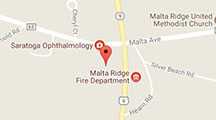Corneal abrasions may heal faster with a collagen-based bandage contact lens, patients on continuous glucose monitoring exhibit reduced risk of diabetic retinopathy, and neurology residents say they would benefit from more ophthalmoscopy training. Source: AAO
Results of a small case-control study suggest that keratoconus in young adults may be linked with increased feelings of anxiety and depression and a lower vision-related quality of life. Source: AAO
While there is ample published literature highlighting global variance in the spectrum of organisms that cause endogenous endophthalmitis (EE), there has been a lack of publications on how EE presents within different regions of the United States. Source: AAO
A heads-up 3D system may make learning vitreoretinal surgery easier, adults with childhood amblyopia could be at risk for cardiometabolic issues, excess Medicare charges are lower in ophthalmology, and more. Source: AAO
As the inaugural speaker for the “Creatively Sharing Ideas and Inspirations” series at AGS 2024, Dr. Ruth Williams shared 3 pillars of happiness that have helped her achieve greater fulfillment in both her personal life and professional life. Source: AAO
An observational, nonrandomized, optional extension of the pivotal 16-week randomized controlled trial for the eye tracking–based CureSight binocular system looked at rates of pediatric amblyopia recurrence following cessation of treatment. Source: AAO
Investigators at a tertiary clinic in India hypothesized that patients with glaucoma are in a state of chronic stress, potentially leading to “allostatic overload,” or physiologic consequences of exposure to chronic environmental stressors. Source: AAO
The AGS 2024 symposium “AI in Glaucoma: What’s Real, What’s Possible, and What’s Science Fiction” explored the current status of artificial intelligence (AI) for glaucoma and visions for its future use. Source: AAO
A pilot program for remote diagnosis of central retinal artery occlusion (CRAO) appears to facilitate the rapid diagnosis and treatment of this emergency medical condition. Source: AAO
Eye injuries due to electric scooters and hoverboards have increased dramatically, cataract surgery patients appreciate postsurgical phone calls, and sociodemographic factors may be behind the rates of uncorrected refractive error in African Americans. Source: AAO



